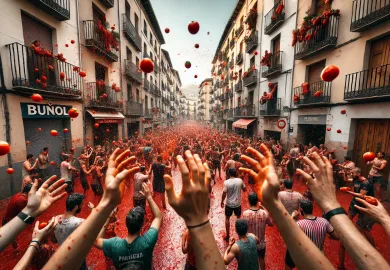
Nestled on the picturesque Castle Hill, Buda Castle stands as one of Budapest’s most prominent and awe-inspiring landmarks. With its rich history spanning centuries, this majestic fortress has borne witness to the rise and fall of empires, regal ceremonies, and the evolution of Hungary’s capital. Visitors from around the globe come to admire its stunning architecture and panoramic views of the Danube River, making Buda Castle a must-see attraction in Budapest.
The Origins of Buda Castle: A Fortress of Power
The history of Buda Castle dates back to the 13th century, a time when Hungary faced the threats of Mongol invasions. King Béla IV, determined to fortify the city, initiated the construction of the castle on Castle Hill, overlooking the Danube River. Originally designed as a stronghold, Buda Castle evolved over the centuries from a defensive fortress to a symbol of royal power and prestige.
The medieval period saw the expansion of the castle complex under subsequent kings, particularly King Louis the Great. It wasn’t until the reign of King Matthias Corvinus in the 15th century that the castle reached its zenith. Matthias, known for his Renaissance sensibilities, transformed Buda Castle into one of Europe’s most magnificent royal palaces, adorned with elaborate gardens, libraries, and artwork.
However, the grandeur of Matthias’ Buda Castle did not last. The castle suffered significant damage during the Ottoman conquest of Budapest in the 16th century, and subsequent sieges further eroded its splendor. Despite these challenges, the ruins of Buda Castle became a symbol of resilience for the Hungarian people.
Rebirth Under the Habsburgs: Baroque Grandeur
After years of decline under Ottoman rule, Buda Castle experienced a dramatic revival during the reign of the Habsburgs in the 18th century. Maria Theresa of Austria commissioned the reconstruction of the castle, transforming it into a grand Baroque palace. This marked a new chapter in the castle’s history, one that would blend imperial splendor with royal prestige.
The architects behind the Habsburg reconstruction focused on preserving the medieval core while introducing Baroque elements to create an opulent residence fit for royalty. Grand staircases, ornate facades, and lush courtyards were added, giving Buda Castle the regal atmosphere that it exudes today.
The castle became the official residence of the Hungarian monarchy, and it played a central role in the coronation ceremonies of Hungarian kings. The Baroque-era Buda Castle not only symbolized the power of the Hungarian crown but also stood as a testament to the close ties between Hungary and the Habsburg Empire. Despite facing destruction during the siege of Budapest in World War II, many of these Baroque elements have been restored, allowing visitors to experience the grandeur of this period.
The Modern Renaissance: Buda Castle Today
In the 20th century, Buda Castle faced significant challenges. The aftermath of World War II left much of the castle in ruins, and the Communist regime that followed did little to preserve its historical significance. However, following the fall of Communism, efforts to restore Buda Castle to its former glory gained momentum.
Today, Buda Castle is not only a symbol of Hungary’s rich past but also a hub of culture and tourism. The National Széchényi Library, the Hungarian National Gallery, and the Budapest History Museum are all housed within the castle complex, making it a focal point for art, history, and culture enthusiasts. Visitors can explore centuries of Hungarian history through these institutions while marveling at the castle’s breathtaking architecture.
Moreover, the panoramic views from Castle Hill offer a stunning perspective of Budapest’s skyline, including the iconic Chain Bridge and the Parliament Building. As the sun sets over the Danube, the castle’s illuminated silhouette adds a magical touch to the city’s evening atmosphere, attracting visitors for nighttime walks and photo opportunities.
Must-See Attractions at Buda Castle
Buda Castle is more than just an architectural marvel; it is a treasure trove of historical and cultural landmarks that should not be missed. One of the top attractions is the Matthias Fountain, a stunning bronze fountain depicting a hunting scene, named after King Matthias Corvinus. This Baroque masterpiece is not only visually captivating but also pays homage to the castle’s regal history.
Another must-see attraction within the castle complex is the Hungarian National Gallery, which showcases an extensive collection of Hungarian art, from medieval altarpieces to modern masterpieces. Art lovers will find this gallery a fascinating journey through Hungary’s artistic evolution.
For those interested in delving deeper into the city’s past, the Budapest History Museum provides insight into the evolution of Budapest from ancient times to the modern era. The museum’s exhibitions offer a glimpse into the life of the castle throughout different periods, making it an educational experience for history buffs.
Lastly, the Castle Gardens provide a peaceful escape from the bustling city below. These beautifully landscaped gardens are perfect for a leisurely stroll, offering a serene environment to soak in the castle’s surroundings. Whether you’re admiring the vibrant flowers in spring or the golden hues of autumn, the gardens at Buda Castle are a hidden gem waiting to be discovered.
Conclusion: A Symbol of Budapest’s Timeless Beauty
Buda Castle stands as a testament to Hungary’s resilience, creativity, and rich history. From its origins as a medieval fortress to its Baroque transformation and modern restoration, the castle has evolved alongside the nation it represents. Today, Buda Castle remains a symbol of Budapest’s timeless beauty, drawing visitors from around the world to explore its history, art, and culture.
As you wander through its courtyards, visit its museums, and gaze upon the breathtaking views from Castle Hill, you’ll understand why Buda Castle holds such an important place in the heart of Budapest. Whether you’re a history enthusiast, an art lover, or simply a traveler seeking to experience one of Europe’s most iconic landmarks, Buda Castle offers an unforgettable journey through time.
Let the grandeur of Buda Castle inspire your exploration of Budapest, as this historical gem continues to captivate the imaginations of all who visit.








